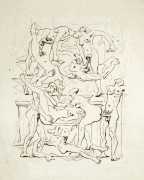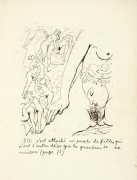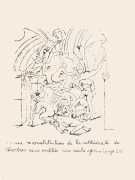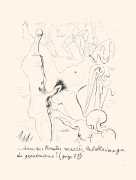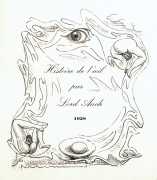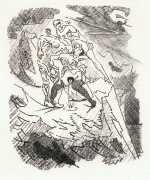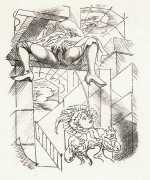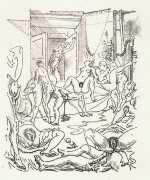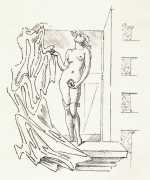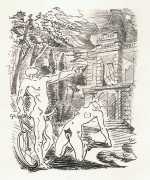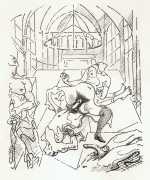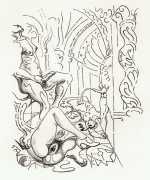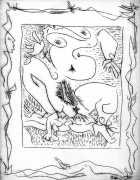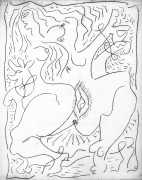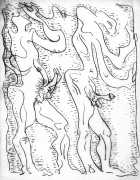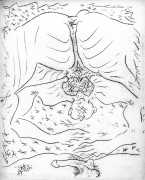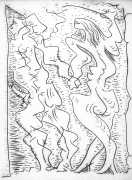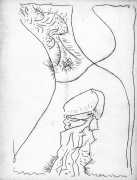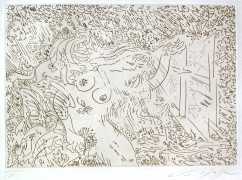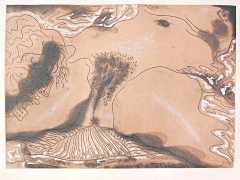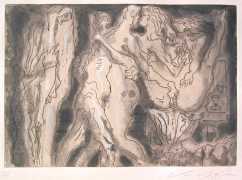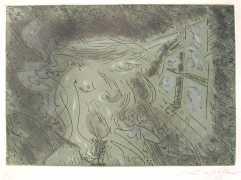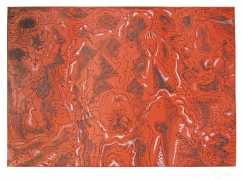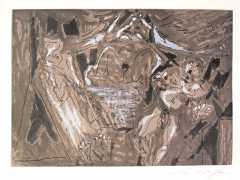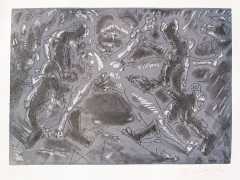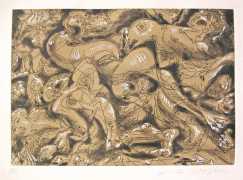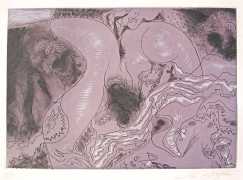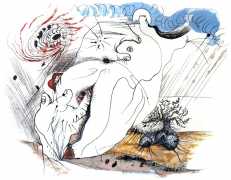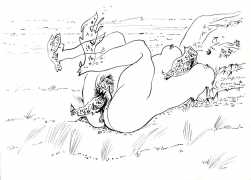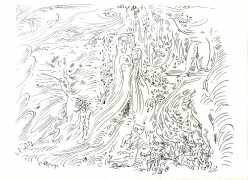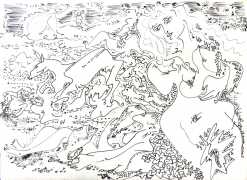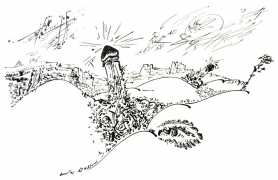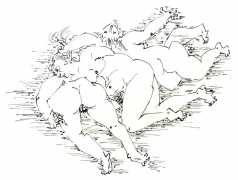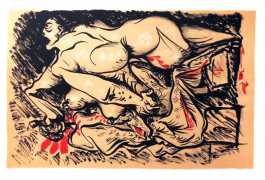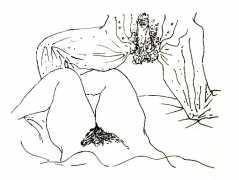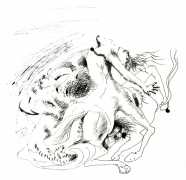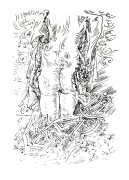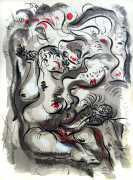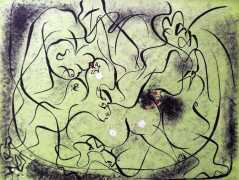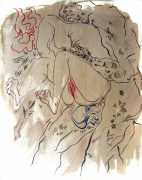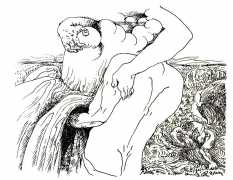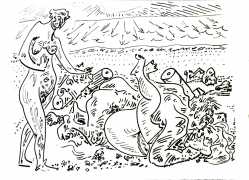 André Masson was one of the major early French surrealist artists. A close friend of André Breton, Joan Miró and Max Ernst, he joined the surrealist movement in the early 1920s, then disassociated with it in the early 30s, focusing instead on the human condition, the fundamental impulses of love and hatred, and his reactions to the Spanish Civil War.
André Masson was one of the major early French surrealist artists. A close friend of André Breton, Joan Miró and Max Ernst, he joined the surrealist movement in the early 1920s, then disassociated with it in the early 30s, focusing instead on the human condition, the fundamental impulses of love and hatred, and his reactions to the Spanish Civil War.
Although Masson is most often associated with surrealism, his work evades definition through any one twentieth-century movement. While it is true that some of his finest work was produced when he was closest to surrealism, they were generated by deep tensions – as he wrote, ‘Painful contradictions are sometimes the source of the greatest riches’.
During the early days of surrealism he was one of the most enthusiastic employers of automatic drawing, making a number of automatic works in pen and ink. Masson experimented with altered states of consciousness, and from around 1926 he experimented by throwing sand and glue onto canvas and making oil paintings based around the shapes that formed. By the end of the 1920s, however, he was finding automatic drawing restricting; he left the surrealist movement and turned instead to a more structured style, often producing works with a violent or erotic theme.
Under the German occupation of France his work was condemned by the Nazis as degenerate, and he escaped on a ship bound for the French island of Martinique, from where he went on to the United States. Upon arrival in New York, customs officials inspecting his luggage found a cache of his erotic drawings. Living in Connecticut, his work became an important influence on American abstract expressionists such as Jackson Pollock. After the war he returned to France and settled in Aix-en-Provence.
André Masson was married twice, first in 1919–29 to Odette Cabalé, with whom he had a daughter Lily who became an artist, and then in 1934 to Rose Masson, with whom he had two sons, the musician Diego and the actor Luis.
André Masson illustrated many books and portfolios during his long artistic career; we have only illustrated five complete works here. Fortunately Lawrence Saphire and Patrick Cramer have produced a catalogue raisonné of his work, André Masson: The Illustrated Books, published by Patrick Cramer in 1994 and updated in 2002. It includes 605 illustrations, with 317 of them in colour, covering some 120 titles. If you are interested in seeing a comprehensive overview of Masson’s lifetime’s work, this is an excellent resource.


